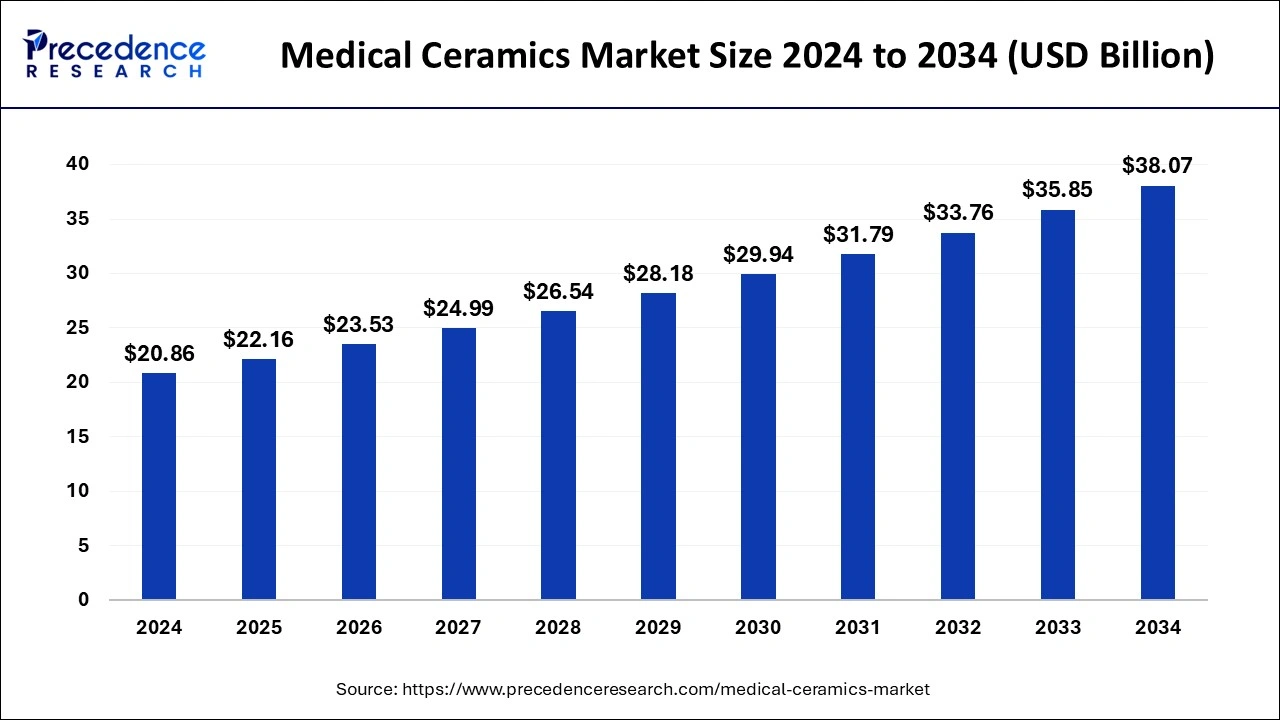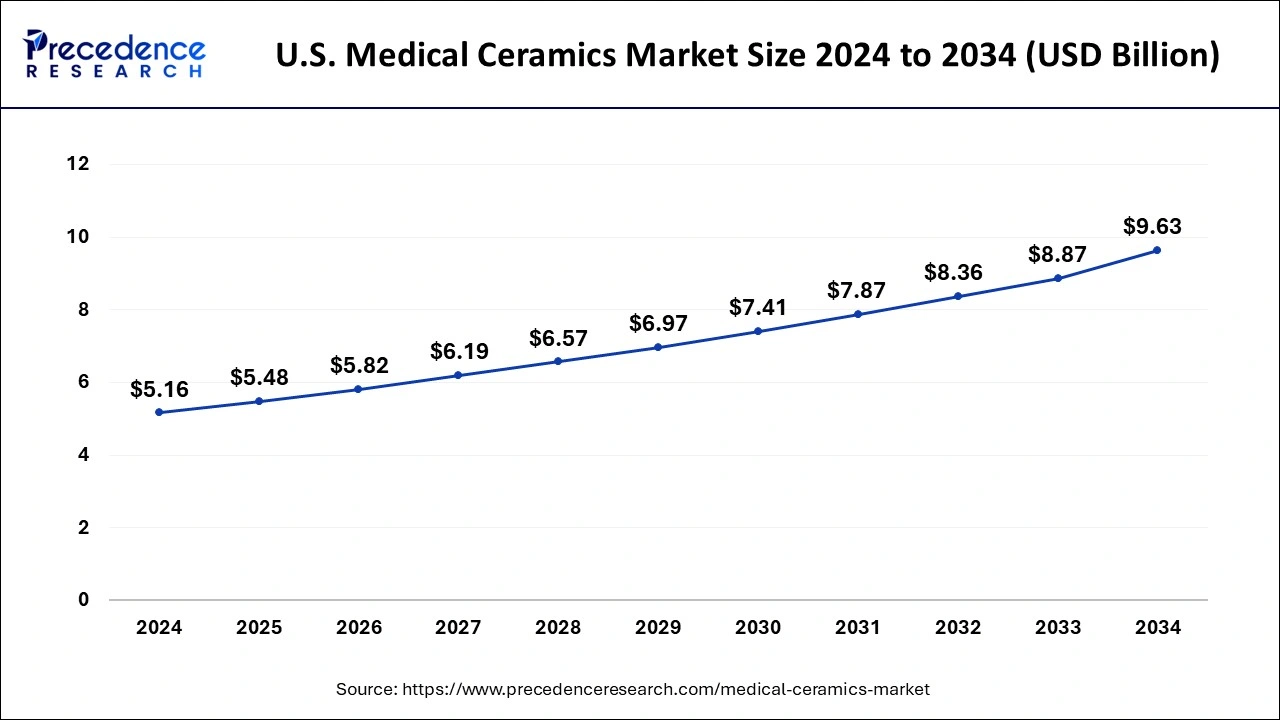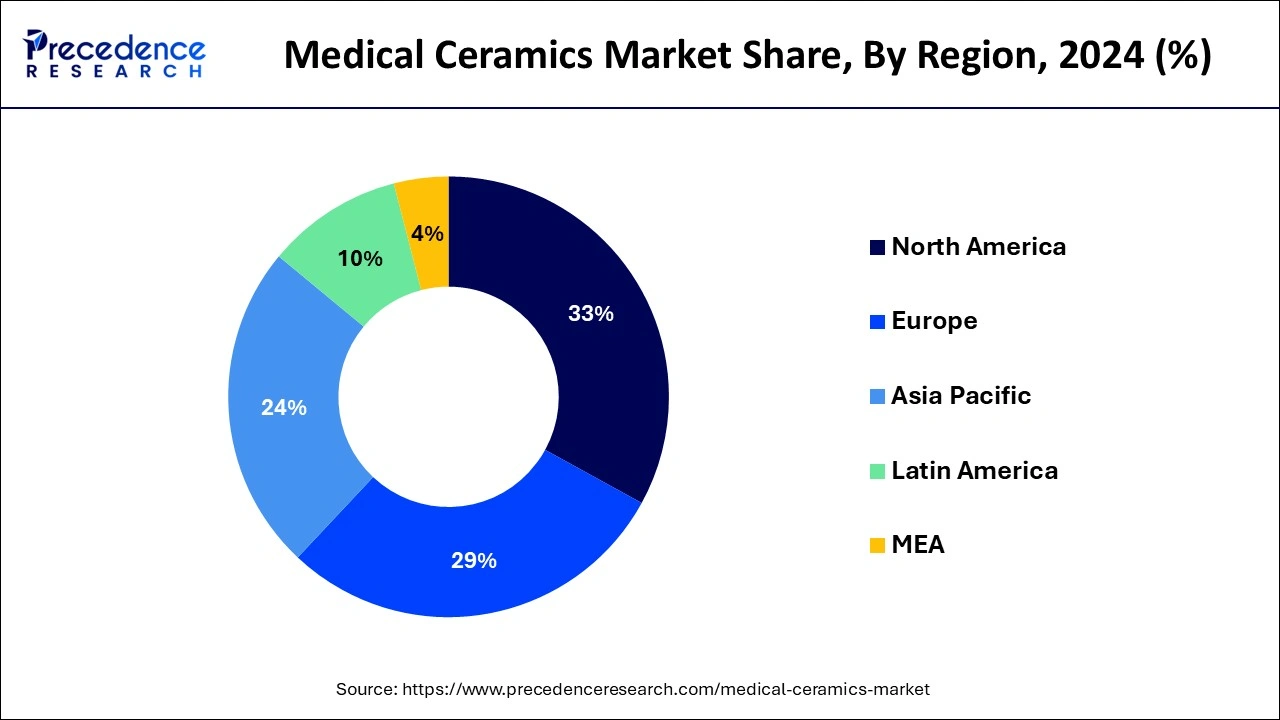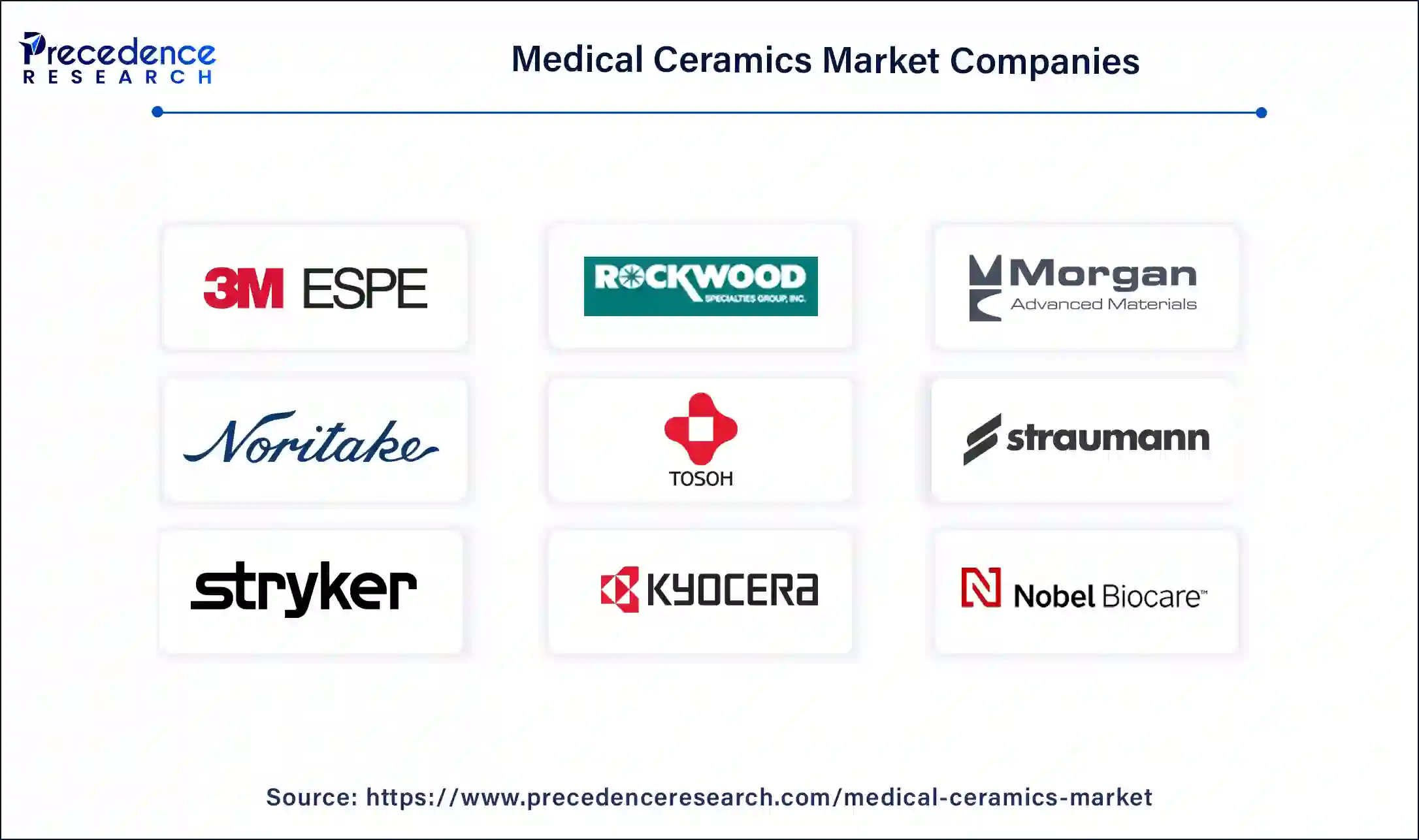January 2025
The global medical ceramics market size is calculated at USD 22.16 billion in 2025 and is forecasted to reach around USD 38.07 billion by 2034, accelerating at a CAGR of 6.21% from 2025 to 2034. The North America market size surpassed USD 6.88 billion in 2024 and is expanding at a CAGR of 6.36% during the forecast period. The market sizing and forecasts are revenue-based (USD Million/Billion), with 2024 as the base year.
The global medical ceramics market size accounted for USD 20.86 billion in 2024 and is expected to exceed around USD 38.07 billion by 2034, growing at a CAGR of 6.21% from 2025 to 2034. The rising demand for medical ceramics is observed due to their unique properties that are suitable for a wide range of medical applications.

Integration of artificial intelligence into medical ceramics brings revolutionary changes to the medical ceramics market by enhancing the manufacturing process with efficiency and precision. AI technology assists in the design, creation, and development of new medical ceramic products, resulting in optimizing material properties as desired and specific to medical applications. Moreover, the incorporation of automation helps in the production process, reducing time and improving consistency, which ultimately increases efficiency and lowers manufacturing costs.
The U.S. medical ceramics market size was exhibited at USD 5.16 billion in 2024 and is projected to be worth around USD 9.63 billion by 2034, growing at a CAGR of 6.43% from 2025 to 2034.

North America dominated the global medical ceramics market with the largest share in 2024. North America has a high usage rate of implantable medical devices and diagnostics imaging equipment. According to the AMA (American Medical Association), about 10% of Americans will have an implanted device for their entire lifetimes. There is a rising demand for implant medical devices as they deliver medicines, replace damaged body parts, monitor physiological activities, and support specific organs or tissues, improving quality of life. According to the Orthopaedic Surgeons, more than 700,000 knee replacement surgeries are performed annually in the United States. Over 3 million Americans live with cardiac pacemakers, and 70% of people have their pacemakers under the age of 65.

Asia Pacific is projected to expand at a notable CAGR in the medical ceramics market during the forecast period. The expansion in the region is noticed due to the increase in infrastructural advancement of healthcare. A significant growth in the region is noted in countries such as China, Japan, and South Korea due to the surging number of patients opting for knee and hip replacement surgeries, an increasing number of research facilities, and easy accessibility of treatment. Additionally, China offers cost-effective medical devices for patients with lower disposable incomes.
The medical ceramics market has become an essential component in the healthcare sector. The strength, durability, and custom-design properties of medical ceramics used in mold casting make them useful for various applications. The healthcare industry is constantly advancing towards prosthetic aids, which is raising the demand for medical ceramics to create artificial bones and joints for dental material. They are extensively used to repair or replace damaged bone tissue. It offers various benefits, including biocompatibility, non-toxicity, dimensional stability, and bioinertness in endodontic applications.
| Report Coverage | Details |
| Market Size by 2024 | USD 20.86 Billion |
| Market Size in 2025 | USD 22.16 Billion |
| Market Size in 2034 | USD 38.07 Billion |
| Market Growth Rate from 2025 to 2034 | CAGR of 6.21% |
| Dominating Region | North America |
| Fastest Growing Region | Asia Pacific |
| Base Year | 2024 |
| Forecast Period | 2025 to 2034 |
| Segments Covered | Material Type, Application, and Regions. |
| Regions Covered | North America, Europe, Asia-Pacific, Latin America, and Middle East & Africa. |
Prevalence of hip and knee replacement
The rising number of knee and hip replacement surgeries is propelling the medical ceramics market. It is estimated that by 2030, there will be more than 60% percent of total knee replacement procedures compared to the last decade. The predominant reason for knee and hip replacement is high patient satisfaction, which encourages people to experience pain relief and significantly improve joint function soon after surgery.
There is a 90-95% success rate received after total hip replacement and almost total pain relief followed by surgery; knee replacement has a success rate of 80-85%. Ceramic is the most preferred material when it comes to knee and hip replacement compared to metal due to its ceramic strength, hardness, and resistance properties. Along with that, less physical and chemical wear and tear was observed with ceramic than with polyethylene and metal.
Regulatory framework
The strict regulations associated with medical ceramics are creating a hindrance to market expansion. The biomaterial and medical devices are subjected to strict testing protocols including in vitro and animal-based testing. There must be a high-standard material capable of integrating into biological environments such as the oral cavity and other anatomical regions of the human body.
Biocompatible ceramic
The future of the medical ceramics market is revolutionizing with the incorporation of advanced materials with strong and lightweight properties. Consumer preferences and medical professionals’ recommendations are increasingly growing towards all ceramic biomaterial use for implants, prosthetics, and many more. The incorporation of zirconium oxide makes the ceramic tougher in terms of physical features and more resistant to fractures. It is a strong, hard, and biocompatible material with good thermal and mechanical properties.
The bioinert ceramics segment contributed the highest share of the medical ceramics market in 2024. The dominance of this segment is observed due to its stable and completely safe properties. Bioinert ceramic is utilized in the medical sector for implanting or re-establishing the function of degenerated or traumatized organs in the human body. It possesses excellent chemical stability, biocompatibility, corrosion and water resistance behaviors, and mechanical strength. It is widely used for hip/knee replacement and dental implants due to its great characteristic of being tensile, compressive, hard, and tough. Bioinert ceramic comprises three metal types, including alumina, zirconia, and titania, which are commonly used in musculoskeletal applications.
The bioactive ceramics segment is estimated to grow rapidly during the forecast period. The growth of this segment is expected to continue with the help of its design, which is used to induce specific biological activity for repairing damaged organs. It is still not widely popular due to its low mechanical strength and fracture toughness, as this characteristic restricts its use in non-bearing applications. However, recent studies have resolved the issue of mechanical and biological properties by incorporating bioactive ions, polymers, bioactive proteins, and other chemicals in bioactive ceramics. This is more suitable for tissue engineering scaffolds.
The dental application segment captured the biggest medical ceramics market share in 2024. The popularity of ceramic material in dentistry is due to its biocompatible properties, which are aesthetically pleasing. Ceramics have a hypoallergenic characteristic, which ultimately makes them a great, suitable alternative for people allergic to titanium. Ceramics is in the dentistry field and is commonly used for prostheses such as crowns and bridges, orthodontic devices- dental braces, and dental implants, which include root implants. They are highly preferred by consumers as they match the color of any individual's teeth, and along with that, they reduce the risk of infection and deterioration.
The orthopedic application segment is expected to grow at a significant CAGR from 2025 to 2034. The expansion of this segment is observed due to the extensive use of ceramic to replace or reconstruct bones and joints. These are used to treat bone non-union and feature healing. The addition of some elements to the ceramic, such as magnesium, zinc, strontium, and boron, enhances the osteoconductive property of the ceramic.

By Material Type
By Application
By Geography
For inquiries regarding discounts, bulk purchases, or customization requests, please contact us at sales@precedenceresearch.com
No cookie-cutter, only authentic analysis – take the 1st step to become a Precedence Research client
January 2025
March 2025
August 2024
January 2025